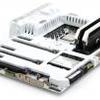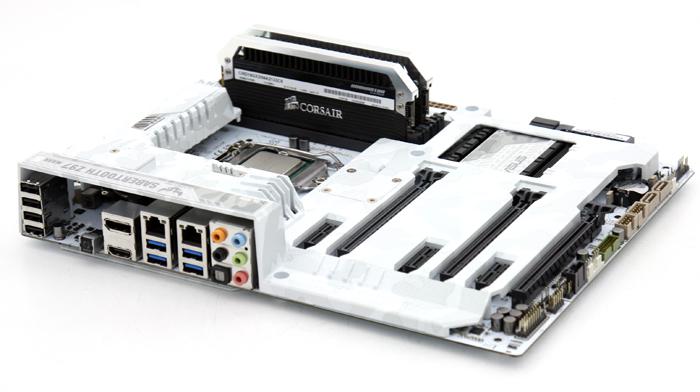Final Words & Conclusion
Final Words & Conclusion
The SaberTooth Z97 Mark S Limited Edition obviously shares 99% of the DNA compared to the Mark 1, as such it shares all the same features. The Mars S was released based on popular trending demand, the need for that white colored product. And it works really well. What I like very much is that ASUS took the extra mile by coloring the PCB white. I mean, they could have gone for a black PCB with white shielding, but no they went full circle. And from what i understand from within the industry, white PCB based products are much more expensive to manufacture, that does translate into pricing as this board positions itself in the sub 300 EURO range, that makes the Mark 1 75 EURO cheaper. Prices and differences in USD are roughly the same. So the extra cash is spend on the limited design run. At 300 EURO we do feel that we miss out on a few things like KillerNIC, WIFI, on/off/reset/OC buttons, Diagnostic LEDS and so on. But historically the TUF series always has been designed with an affordable budget in mind, that white PCB changes that dynamic a bit TBH.
The Platform & The Motherboard
Now, the Intel Z97 chipset all by itself is not really interesting from an upgrade point of view if you bought a PC in say the last two years. It is a re-spin of the Z87 DNA. There are a couple of differences that the chipset however offers, and that's making PCI-E storage units compatible with standards like SATA Express and M.2 PCI-E SSDs. But if you purchased a Z87 motherboard and a Haswell processor last year already, by all means there is just no reason to upgrade whatsoever. Even coming from Sandy Bridge or Ivy Bridge processors and the Z77 platform will not change my mind about this recommendation. The big conundrum however is this: Z97 motherboards can be very interesting if you are in need of an upgrade. See the motherboard manufacturers simply went nuts with their motherboard designs, and I believe that the last several months has to be the best time if you look at what the motherboard manufacturers did and now are offering. The latest iteration of the BIOS uEFI interface finally has become mature and I've actually started to really like it.
Storage
Combined with four SATA 6Gbps ports we can hardly argue anything. Four of them are provided by the Intel Z97 chipset and two more are controlled by ASMedia ICs, and these have become pretty decent really. So storage wise there's just really little to complain about. A bit of a miss is the lacking M.2 interface though. You do get SATA Express, but I would have happily traded that one in for M.2.
Aesthetics
The back-plate shield kicks ass, and makes this a very sturdy motherboard. Now we can discuss back and forth what the added benefit of the shielding is and if the prognosed airflow improvements actually make a difference. I'll leave that to you to decide. Admittedly, the shields do look nice in an all black and white PC case, combine it with some liquid cooling on the processor and things will start to look rather shweeeeeet. Overall the white design makes this a terrific looking motherboard with a proper layout
Performance & Tweaking
Overall non-overclocked performance as stated is above the baseline of the reference Z87/97 motherboards we tested, with an offset here and there of course. The tweaking performance of this motherboard was on par with what we expected. We got the 4770K processor rocking stable at 4700 MHz with the memory (XMP enabled) at 2133 MHz very easily, and that's not bad at all. Our cherry picked Devils Canyon 4790K however reached 5.0 GHz stable on this motherboard. One we added voltage and combined the processor with a H110 Liquid cooler from Corsair the sky became the limit. But as mentioned so often, Haswell processors run hotter when overclocked opposed to Sandy Bridge, reaching 4800~5000 MHz might be easy to accomplish with this motherboard and the right binned processor but you'll find yourself needing juice in the 1.325~1.400 Volts range of the processor and that requires serious cooling. So be prepared for processor heat, proper liquid cooling definitely deserves a recommendation here alright. And overall, overclocking can not be any easier with what ASUS offers.
Nitpicking
No AC WIFI - No M.2 PCIE SSD slot - no on-board power/reset buttons - and a jumper for Clear CMOS on a 300 EURO motherboard is a little 2007.
Final Words
- Sign up to receive a notice when we publish a new article
- Or go back to Guru3D's front page.
“Different roads sometimes lead to the same castle.”



